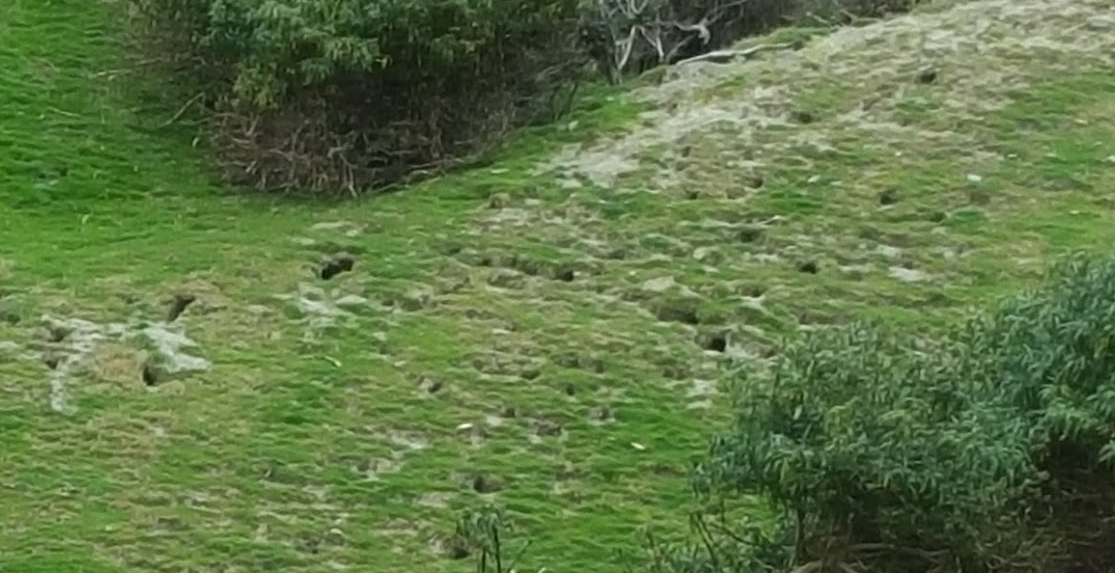Fumigants are poisons that are introduced into a rabbit burrow system, to form toxic gases which are inhaled by the rabbit, causing death by absorption. Fumigation does not require the rabbit to eat a bait and so is effective in areas where bait shyness is a problem. It is labour intensive but can be used effectively in the breeding season to control young rabbits which, because of their small range, may not come across or feed on baits. Baiting should not be undertaken during the breeding season. Phosphine is most commonly used. Phosphine is sold as pellets of magnesium phosphide (Magtoxin®). The pellets combine with water vapour in the soil or air to produce phosphine gas (hydrogen phosphide). Hydrogen phosphide is heavier than air and has a distinctive warning odour, pungent and unpleasant even at low concentrations. Rabbits that are exposed to the gas and escape may die up to a week later. It works well in soil temperatures above 150C, with over 10% soil moisture – the more moisture, the faster the gas liberation.
Guidelines for safe use of hydrogen phosphide gas:
Read and comply with the LABEL INSTRUCTIONS and Safety Data Sheet.
When handling tablets, always wear waterproof gloves. Always open the fumigant flask outside and only open the container for immediate use. In breezy conditions open the container with your shoulder facing the wind. Protect from moisture, open flames or heat and keep away from water. Do not breathe dust or fumes. During prolonged use, always wear a suitable face mask that will filter hydrogen phosphide gas. Do not eat, drink or smoke while using, and wash yourself thoroughly before meals and after work. Store in the original container (i.e. in which the pellets were supplied), tightly closed, away from foodstuffs and under lock and key. After using the content of a flask, there may be considerable dust residue. This should be disposed of by burying (e.g. placing it into the last burrow fumigated). Rinse, crush, and bury the empty container. Do not rinse containers which retain considerable dust residue (refer previous).
Procedure for fumigation
1. For rabbit burrows that are open and have obvious signs that rabbits are living in them: cut a piece of turf to block the main burrow entrance; check for and block all other entrances to the burrow or warren system; carefully open the container in open air and downwind of the main burrow entrance. DO NOT breathe the fumes; tip a tablet into your gloved hand (RESEAL THE CONTAINER) and place the tablet at arm’s length down the rabbit burrow. For large burrow systems, allow 1 pellet for each cubic metre or as per label instructions. One pill per working entrance is sufficient for a warren system. If the ground is very dry, place the tablet on a piece of wet newspaper to speed up the release of the gas; block the entrance of the burrow with the turf (grass side facing inwards). Then proceed to fill the entrance of the burrow with loose earth and tramp down firmly to make the entrance airtight. If available, stone(s) can be used to block the entrance, sealed with earth over top.
2. If you find a burrow that is blocked with loose earth, open the burrow, fumigate and close it as described above. A burrow filled with loose earth is likely to have young rabbits within.
3. The next day check to see if any sealed burrows are open. If so, fumigate again and reseal.
Useful tip: having a dog running around is essential to encourage rabbits hiding above ground into burrows. A major cause of fumigation failure is rabbits above ground level digging holes after fumigators have left, allowing the gas to dissipate. Ensure the dog is restrained prior to fumigating to prevent accidental exposure.


